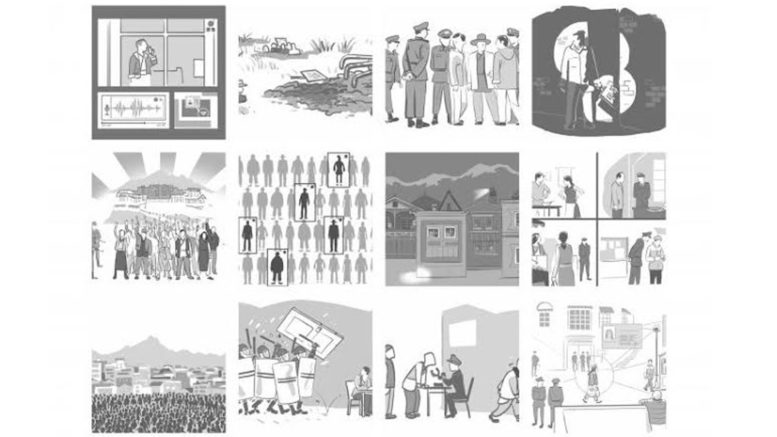DHARAMSHALA: Since the Chinese invasion of Tibet in 1950, Chinese media has shaped the way Tibetans view themselves. The Chinese authorities use dozens of policy and implementation terms as propaganda to tighten repression in Tibet.Propaganda, no matter how tricky, is unlikely to generate the kind of loyalty or respect Chinese authorities seem to want from Tibetans.
In an illustrated glossary released on Monday, Human Rights Watch has highlighted the increasing usage of terms by the Chinese authorities in official media to “sustain their rule”. The use of such propaganda to sustain their rule is particularly evident in Tibet, where there has been a long history of Human Rights violation and restrictions to freedom of speech and expression.
The illustrated glossary titled “Tibet: A Glossary of Repression” by the Human Rights Watch brings forward an elucidation of a dozen terms. The opaque policy terms exemplify China’s propaganda in Tibet aimed at ensuring total acceptance and supervision by officials of ordinary Tibetan people.
Commenting on the illustration, Sophie Richardson, China Director at Human Rights Watch said, “Orwell himself would be hard pressed to invent a better vocabulary of totalitarian management, but ultimately the message of the Chinese authorities’ terms for Tibetans is clear: political nonconformity will be punished, severely.”
The terms illustrated in the glossary involves control on a political and social level. The issuance of these terms are not only aimed at controlling and preventing repression in Tibet but also to discourage any criticism brought forward by the party and questions pertaining to its rule. Some of the terms such as “Social Management”, “Eliminate Unseen Threats” and “Every Village a Fortress, Everyone a Watchman” portray the repressive approach used by China’s authorities to govern Tibet.

The Picture illustrates the policy term “Long-term stability” which describes the ultimate objective of stability maintenance and social management policies. All the other security and control policies are supposed to lead to this outcome.
China’s authorities have long been implementing policies to curb the influence of His Holiness the Dalai Lama as they believe that his influence is the root cause for all the social disputes and unrest that clouds the TAR of China.
The wave of protest that swept the Tibetan Plateau since 2009 enforced the Chinese to put forward a new set of administrative and security mechanisms in what they call the ‘Tibet Autonomous Region’ which involved the deployment of permanent/temporary cadres in monasteries, institutions and villages. These cadres were charged with the responsibility of organising security operations and political education. Also surveillance systems were set up to scrutinize the group of homes in every town and many villages.
Human Rights Watch is a nonprofit, nongovernmental human rights organization made up of roughly 400 staff members around the globe. Its staff consists of human rights professionals including country experts, lawyers, journalists, and academics of diverse backgrounds and nationalities. Established in 1978, Human Rights Watch is known for its accurate fact-finding, impartial reporting, effective use of media, and targeted advocacy, often in partnership with local human rights groups.

